Brazil is a huge and incredibly diverse country — not just in culture, people, and food, but especially in its natural landscapes. There are few places in the world blessed with such rich biodiversity. If you love nature, you'll find endless opportunities here. But since the country is so big and diverse, you might find yourself wondering which regions to explore. How can one experience the best of what this land has to offer when limited time and budget are a factor?
Biomes
A helpful way to think about it is by looking at biomes — large regions defined by their climate, vegetation, and wildlife. It's like dividing the country into different natural worlds, each offering a different fauna and flora and thus a different experience. Brazil has six major biomes:
- The Amazon Rainforest
- The Pantanal (Wetlands)
- The Cerrado (Savanna)
- The Mata Atlântica (Atlantic Forest)
- The Caatinga (Semi-arid scrubland)
- The Pampa (Grasslands)
Splitting the country up into biomes makes it easier to start planning what you want to see and also how to combine destinations. To give you an overview, let's go through each biome one by one and see what makes it special — and why you might want to include it in your trip.
1. Amazon Rainforest (Amazônia)
The most famous of Brazil's biomes. The biggest rainforest in the world, containing most of earth's species.
Being immersed in this huge jungle is a unique experience you will never forget. Going to sleep seeing hundreds of fireflies, waking up to the insane loud sound of howler monkeys, or experiencing a tropical thunderstorm in the middle of the forest will mark your memory.
And while it's not an animal safari you will certainly encounter some interesting wildlife.
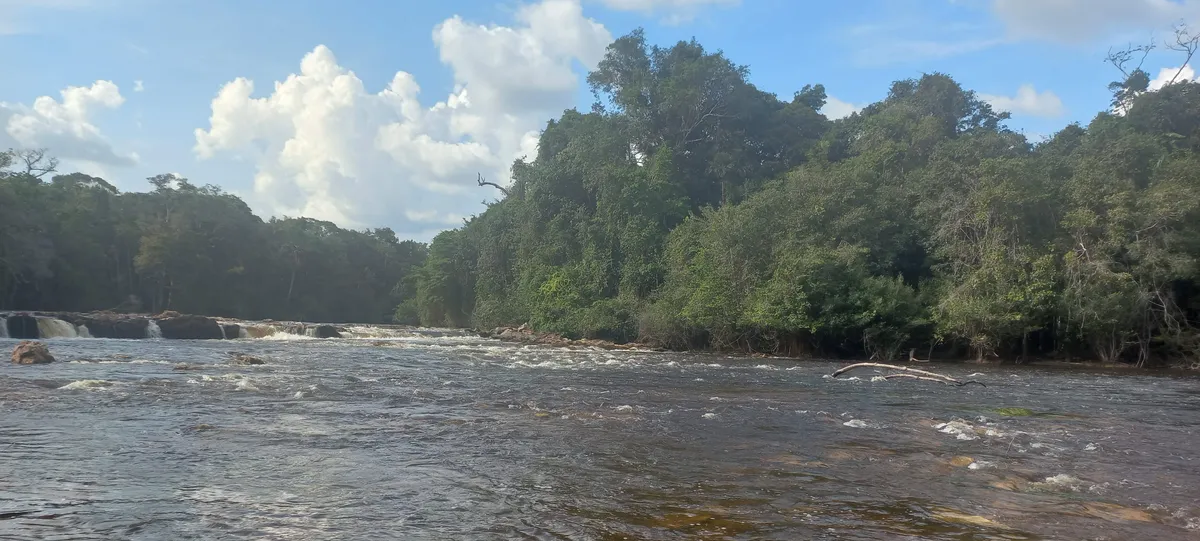 A quiet side channel of the Amazon basin.
A quiet side channel of the Amazon basin.
The main entrypoint to the Amazonas in Brazil is Manaus. From there you can travel to jungle lodges, do multi-day boat tours, or adventure trips where you will sleep in hammocks in the forest.
2. Pantanal
Everyone knows the Amazon. But most people have never even heard of the Pantanal — even though it's also a superlative: The Pantanal is the world's largest tropical wetland. A flooded plain bigger than Portugal, Belgium, Switzerland, and the Netherlands combined.
And it is packed with wildlife. The Pantanal is actually the best place in Brazil to spot animals. While the Amazon is dense and dark, the Pantanal is more open. Furthermore during the dry season animals gather around the rivers and during the wet season they gather in the land islands, which makes them way easier to spot.
You can see jaguars, capybaras, alligators, anacondas, tapirs, and an unbelievable number of birds — from giant jabirus to colorful macaws.
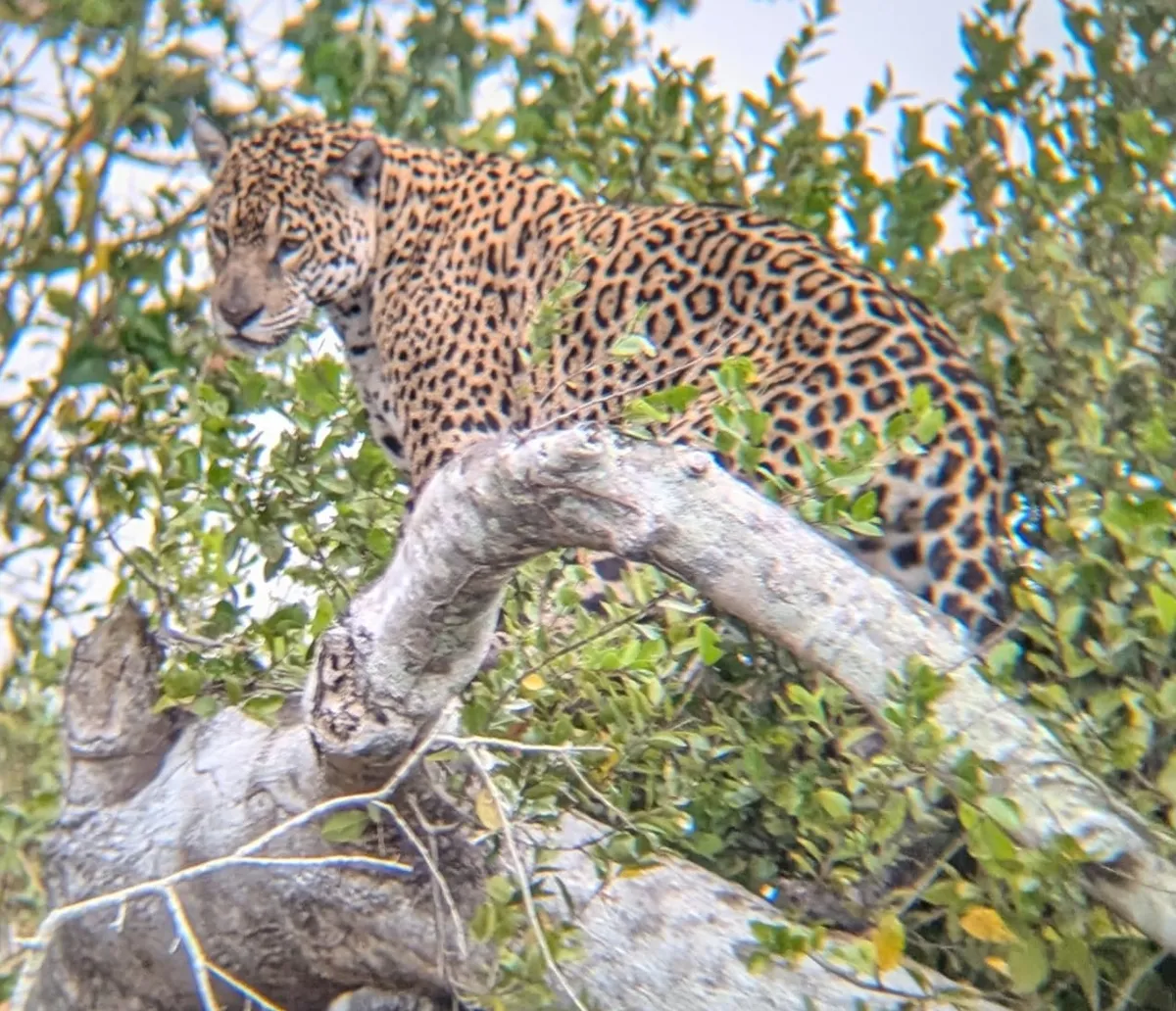 The Pantanal is one of the best places in the world to spot jaguars in the wild
The Pantanal is one of the best places in the world to spot jaguars in the wild
When visiting the Pantanal, you'll need to decide whether to go to the Northern or Southern part. Both offer amazing experiences, but they differ in chances of seeing animals, costs and general activities. Check it out on our map to help decide which one fits your trip best.
3. Cerrado
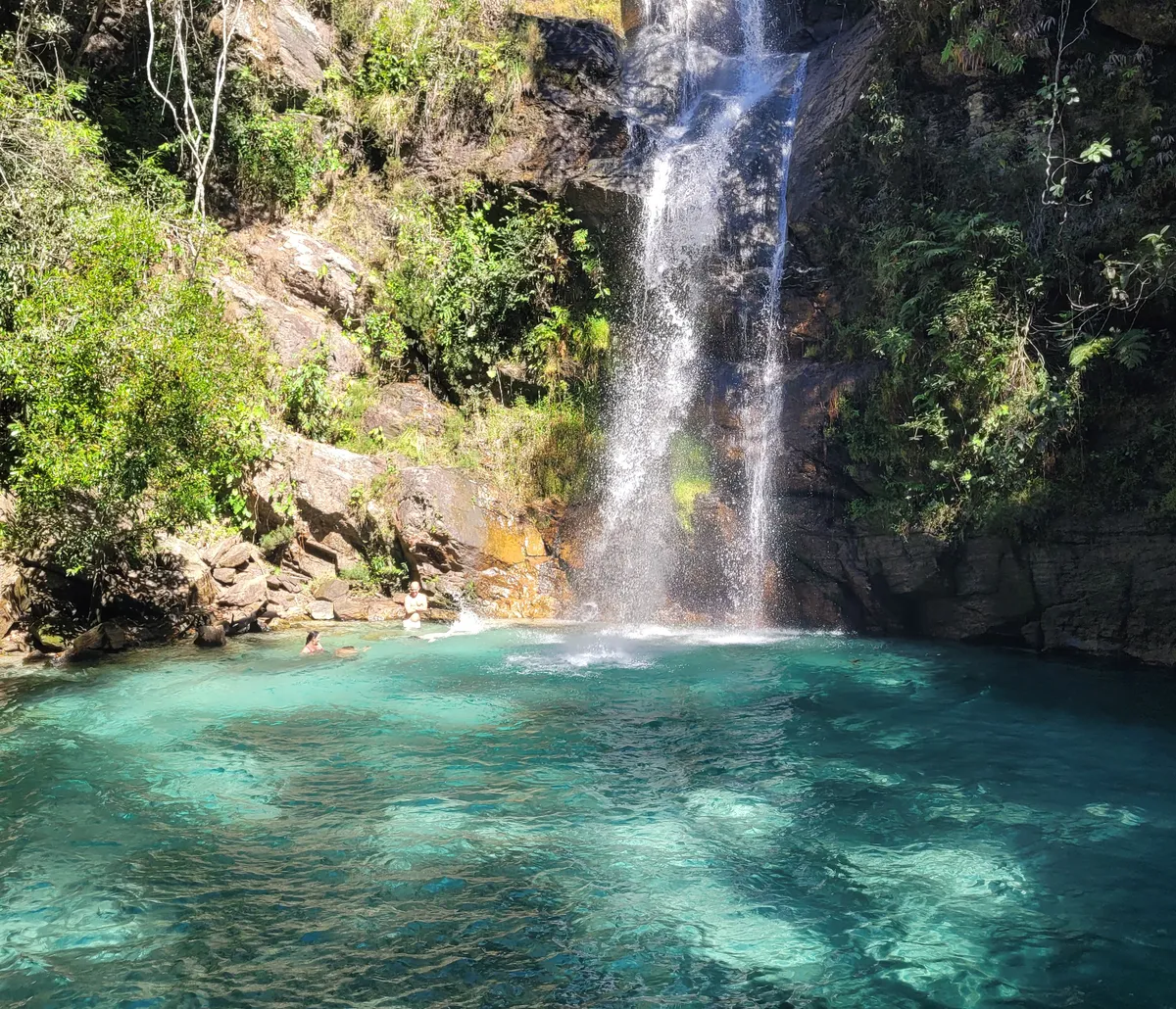 Just one of the many beautiful waterfalls of the Cerrado
Just one of the many beautiful waterfalls of the Cerrado
This is Brazil's savanna — open landscapes with dry trees and tons of hidden waterfalls. It's also a hotspot for biodiversity: It's the savannah with the most species in the world (even more than Africa, although it doesn't have the large mammals). The Cerrado is one of our personal favorites in Brazil and less explored by international tourists. The landscape is very diverse and stunningly beautiful and it has the most beautiful waterfalls we have seen in all of Brazil. The two main tourist destinations here are the Chapada dos Veadeiros and Jalapão.
4. Atlantic Forest (Mata Atlântica)
The Mata Atlântica once covered almost the entire Brazilian coastline. Today, only small parts remain — but those parts are absolutely stunning and full of life. If you can only visit one region in Brazil, this is the one we recommend.
It offers a feeling similar to the Amazon: dense jungle, massive trees, and a great variety of species. But the big advantage: It's much easier to combine with beaches, major tourist destinations, and also the main entry points into Brazil — like Rio, São Paulo.
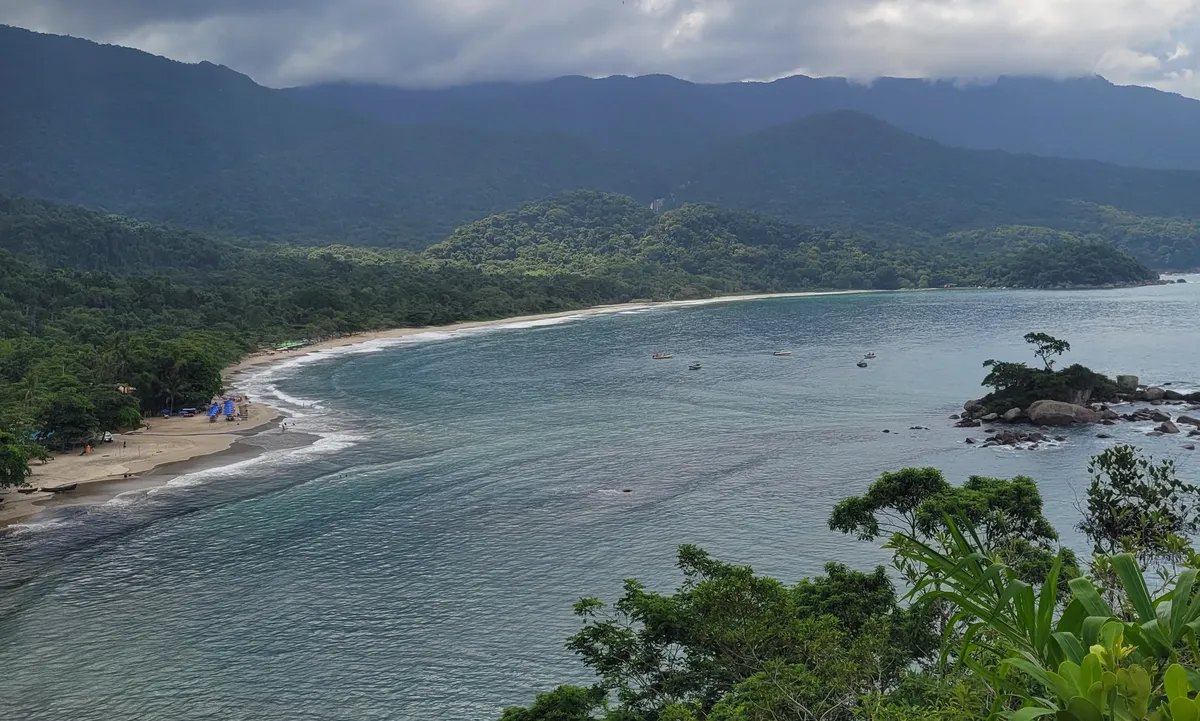 Beautiful beach surrounded by the Atlantic Forest in Ilhabela.
Beautiful beach surrounded by the Atlantic Forest in Ilhabela.
The Mata Atlântica stretches along most of Brazil's coast, from the far south all the way up to parts of the northeast, crossing 17 states. It's one of the most threatened biomes in the world—only about ten percent of its original forest still stands. Still, it remains a biodiversity hotspot, home to countless species of plants and animals that exist nowhere else on Earth.
5. Caatinga
The Caatinga is a dry, semi-arid biome in Brazil's northeast. It's actually the only biome that exists exclusively in Brazil. It is not the Brazil most people imagine, no jungle, no beaches, but a unique landscape full of thorny plants, cacti, and adapted wildlife that survive in the harsh dry climate.
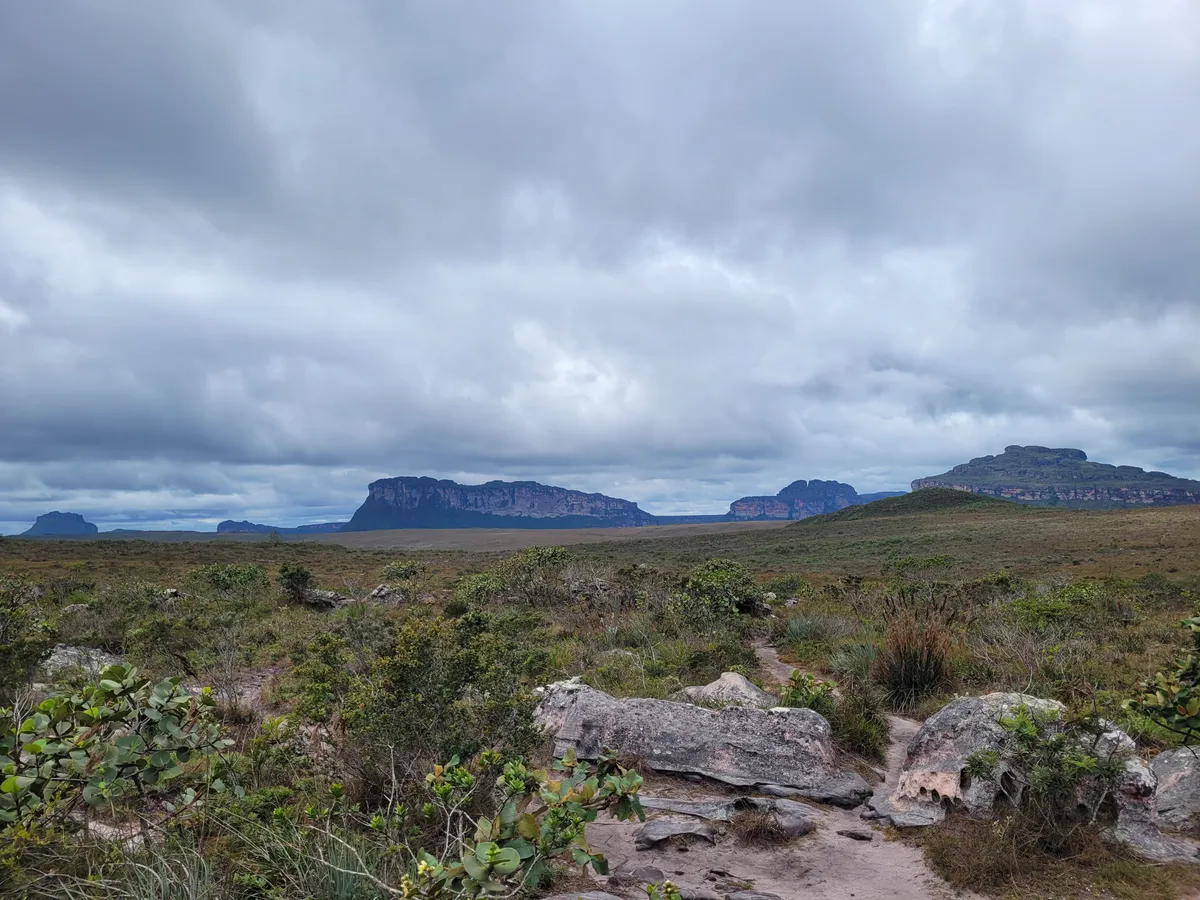 The unique landscape of the Caatinga biome, characterized by its dry vegetation and cacti
The unique landscape of the Caatinga biome, characterized by its dry vegetation and cacti
There aren't that many famous tourist spots in the Caatinga itself. By far the best way to experience it is by visiting the Chapada Diamantina, one of the most beautiful hiking destinations in Brazil. The landscapes there are incredibly diverse. While the Caatinga dominates the lower areas with its dry, open scenery full of cacti, the higher elevations also include patches of Atlantic Forest and also Cerrado-like savanna. Hiking through the Caatinga areas gives you a great sense of this less known nature of Brazil. Besides this the Caatinga can be easily combined with some of the great coastal destinations of the north east.
6. Pampa
The Pampa can be found far in the south of Brazil. It consists mainly of grassland, great for horseback riding,
learning about gaucho culture and having some wine. The Pampa (meaning "flat region" in Quechua) stretches
across Brazil, Argentina, and Uruguay, with the Brazilian portion covering about two-thirds of Rio Grande do Sul
state. While it might seem simple at first glance, this ancient ecosystem is surprisingly diverse.
home to over 3,000 plant species and 500 different birds. For international tourists maybe the least interesting one, but still worth a visit
if you're already close by.
Conclusion
Brazil is more than beaches, carnival and big cities. When you look at it through the lens of biomes, you'll see how incredibly rich and diverse the country's nature is. Each region offers a different impression, and by organizing this way, you can optimize your trip to be as diverse as possible nature wise.
Ready to start planning your Brazilian adventure? Explore our interactive map to discover the best destinations across these diverse biomes and find your perfect route through Brazil's natural wonders.
